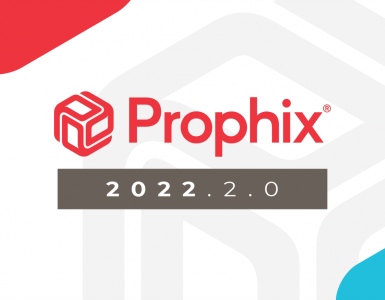 What’s the future of budgeting going to look like? It’s a question that every Finance professional around the globe wants answered. To address the question in ways that matter most to today’s busy Finance professionals, this blog post recaps the insights captured in the Evolution of Budgeting blog series co-authored by the profession’s thought-leader Paul Sharman and Prophix’s CFO, Darren Griffith.
What’s the future of budgeting going to look like? It’s a question that every Finance professional around the globe wants answered. To address the question in ways that matter most to today’s busy Finance professionals, this blog post recaps the insights captured in the Evolution of Budgeting blog series co-authored by the profession’s thought-leader Paul Sharman and Prophix’s CFO, Darren Griffith.
For Paul’s and Darren’s complete discussions, check out the following posts:
- The Evolution of Budgeting (Part 1) – which examines how the purpose of budgets have evolved
- The Evolution of Budgeting (Part 2) – which delves into how the processes and technologies used in budgets have evolved
- The Evolution of Budgeting (Part 3) – which explores how the outcomes of budgets have evolved
What the purpose of budgeting will be in the future:
Paul Sharman (PS): The pace of technology innovation alone has led to an environment where business risk and business volatility are always increasing. As a result, a one year budget planning period is too long if a company wants to be nimble and too short if they want a budget to reflect an adequate time horizon for achieving desired economic profit. That means for budgets to continue to play a vital role in shaping businesses they must be combined with forecasts and ‘what-if’ analyses that can be updated on the fly. That allows decision makers to effectively mitigate risk while ensuring long-term goals are achieved. That’s the new purpose of budgeting.
What the prevailing budgeting processes and technologies will be in the future:
Darren Griffith (DG): Over the last few years, there have been dramatic improvements in software built for the Office of Finance in terms of its computing speed, capacity, reliability, and security. The result: Excel, the once go-to tool of choice for Finance professionals, is being widely revisited.
PS: Looking forward, the budgeting process will fundamentally remain the same – becoming far more efficient, of course – as long as budgets continue to be relevant for business planning, and control and reporting requirements. Furthermore, Finance professionals are widely adopting technologies that help them gain efficiency while integrating information from across sources, far beyond the General Ledger. These advancements allow Finance professionals to automate time-consuming and tedious tasks.
DG: This is a great example of how technology has pushed the boundaries of budgeting – causing the budgeting process itself to evolve into something that was previously unimaginable.
 PS: Exactly. In effect, a new budgeting system has emerged – an Integrated Financial Planning (IFP) system. That system empowers Finance professionals to draw data from operating systems, such as customer relationship management/sales, order processing, personnel management and general ledgers, to capture business driver related information that is essential for preparing budgets. An IFP system also enables the automation of timely forecasts and what-if analyses. This is the future of budgeting.
PS: Exactly. In effect, a new budgeting system has emerged – an Integrated Financial Planning (IFP) system. That system empowers Finance professionals to draw data from operating systems, such as customer relationship management/sales, order processing, personnel management and general ledgers, to capture business driver related information that is essential for preparing budgets. An IFP system also enables the automation of timely forecasts and what-if analyses. This is the future of budgeting.
What the outcomes of budgeting will be in the future:
DG: Today, it’s inspiring to see that Finance professionals’ expectations about budgeting outcomes have evolved. There is a real recognition that short-term goals must lead to achieving long-term strategic goals that increase shareholder value.
PS: That is a fundamental and cataclysmic shift. And the result: the key budgeting outcome is now organizational nimbleness. That translates into plans and goals that are constantly being revisited and updated relative to changing business conditions. Related to that, department and functional managers are increasingly being recognized for, and empowered to, innovate in ways that businesses achieve their strategic goals — rather than merely emphasizing the tactical.
DG: Looking ahead is even more encouraging because operational alignment itself is becoming an outcome of budgeting.
PS: That is the Holy Grail. The good news is that it is in fact achievable. Finance professionals are quickly tapping into the power of automation. That automation serves as a key catalyst that reshapes the outcome of budgeting from static, annual, cumbersome documents into integrated financial plans – living-breathing plans that effectively weave together strategic goals, operational plans, and financial plans.






